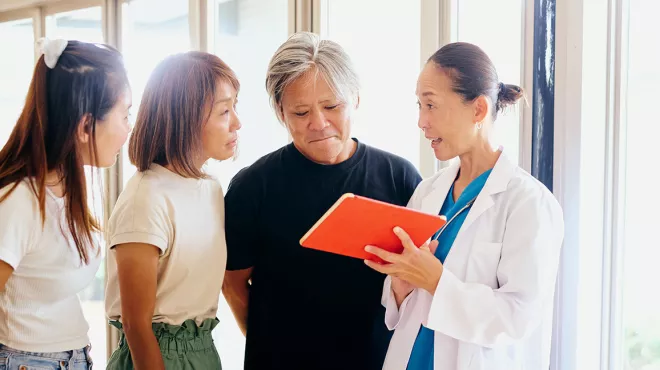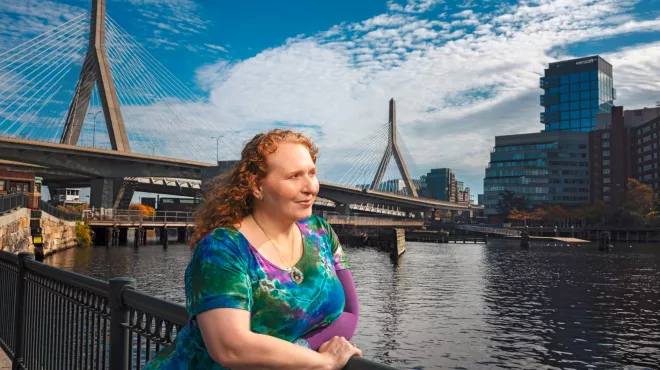Can you imagine being diagnosed with a disfiguring skin disease and being told that there is no cure, and it will be with you for life1? A disease that causes such unbearable pain that you struggle to put your clothes on, find it painful to sit down and in some cases are unable to take care of loved ones, participate in hobbies or go to work. This is the case with hidradenitis suppurativa (HS), and also known as acne inversa or Verneuil’s disease.
Jasmine, an HS advocate, journalist and filmmaker, is one of the estimated 1 in 100 of the global population who lives with this debilitating skin disease2. HS has affected every aspect of her life since she was a child.
About hidradenitis suppurativa
Hidradenitis suppurativa is a chronic and debilitating inflammatory skin disease where recurrent boil-like lumps or nodules form under the skin, and can cause challenging symptoms including tunnels that connect lumps2, 3. They are painful and sometimes break open causing abscesses, drainage and sores2, 3. The nodules can form anywhere on the body, and often affect the groin and genital regions. As the nodules heal, they can leave rope-like scars that can be disfiguring and make movement difficult2, 3.
Once considered a rare condition, it is now thought that as many as 1 in 100 people are affected by HS2. The skin disease is twice as common in women than men and often occurs during or after puberty in the late teens or early twenties1, 2.
Meet Jasmine
When Jasmine was 11, she was told by her doctor that the extremely painful, golf-ball size boil in her armpit could be HS. It took another three years before formal diagnosis as she found herself being referred to many different non-HS treating healthcare professionals, until finally she met a dermatologist able to provide that all-important confirmation. Throughout that time, and without an accurate diagnosis, Jasmine had very little support or relief from the painful boils and abscesses that were appearing all over her body.
Diagnosis and treatment of HS can be complex – there is no cure
Jasmine found new lumps appearing every week. And as each one developed into a painful sore, a new boil would appear on top. Treatments provided limited relief.
You can only imagine what it would be like to have boils, open skin, drainage and scar tissue constantly….. the most difficult part about coping with HS, especially as a woman, is dealing with it in the groin and buttock areas.
There is no specific test for diagnosing HS disease. It is often misdiagnosed in the early stages and can take up to seven years to reach a formal diagnosis as even among dermatologists, HS is not widely recognized or treated3, 4. As the disease usually becomes more severe over time3, early diagnosis and treatment is important to help manage symptoms and prevent new boils and abscesses forming1.
HS treatment often involves many different medications and approaches. Medications such as antibiotics are frequently prescribed, but often only provide temporary and moderate relief to the symptoms, rather than treating HS as a disease itself5.
For some patients, surgery involving skin grafts can be used to remove HS from affected areas1. Unfortunately, even following surgical procedures, the rate of HS returning is high1.
A devastating impact on every aspect of daily life
The chronic and debilitating nature of HS makes it one of the most distressing and painful dermatological conditions, with a considerable psychological burden on patients, and in many cases, HS leads to social withdrawal, unemployment, depression and suicidal thoughts6.
Jasmine’s life is affected from ‘top to bottom’ as she explains in the video, including her relationships, diet, and even simple daily activities such as dressing and sitting – literally everything.
HS has impacted every aspect of my life. It has been extremely devastating on my mental health and my ability to feel like I'm a woman. It's really worn down my self-esteem.
The power of advocating for improved HS care
Jasmine explains how her role advocating for others with HS has helped her come to terms with the disease and reflect on the importance of actively searching for the right medical support.
Being an HS advocate has helped me reduce the shame that I feel with HS and really provided space for me to exist in a world that really tells me that I shouldn’t. I’ve had to learn to love myself, outside of my body and know that I'm more than what is appearing on my skin.
I share my HS story for the 11-year-old girl that was never able to have agency over her body. When I was that age, I felt lost, I felt confused and all I wanted was community. And I just really wanted to be held and told that I was valuable. And that's why I do what I do.



